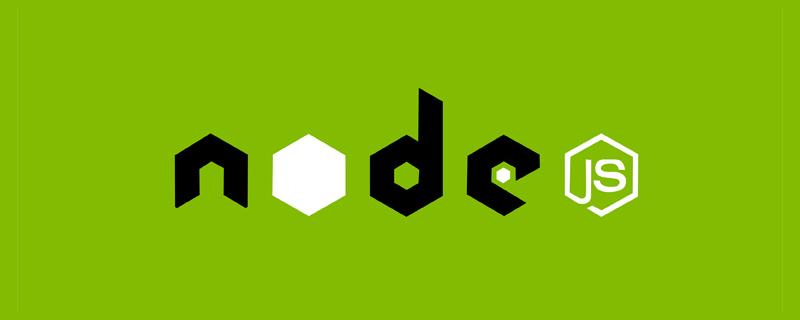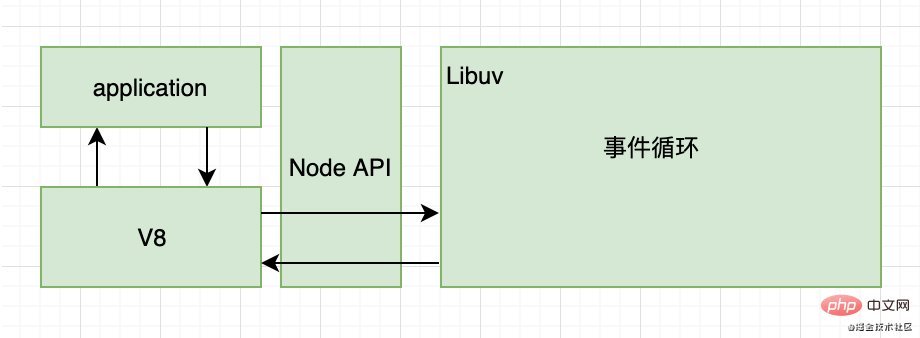Home > Article > Web Front-end > Understand the event loop in node.js in one article
This article will introduce you to the event loop in node.js, look at the event loop model, the various stages of the event loop, and share two interview questions about the event loop. Let’s take a look. Look!

The JavaScript engine itself does not implement the event loop mechanism. The event loop in the browser is implemented by the browser, and the event loop in NodeJS is mainly implemented by the underlying Libuv library.
The Libuv library is event-driven, which encapsulates and unifies API implementations on different platforms. NodeJS's cross-platform and event loop mechanisms are implemented through the Libuv library. [Recommended learning: "nodejs Tutorial"]

The above is divided into four steps:
1. NodeJS's V8 engine parses JavaScript code, and then call the Node API
2. NodeAPI allocates tasks to the Libuv library for processing.
3. Libuv manages the execution of these tasks through the event loop mechanism, and returns the results to V8 engine.
4. V8 engine callback processing Libuv returns
Divide different task queues according to task types, micro task queue and macro task queue.
Macro tasks: setTimeout, setInterval, setImmediate
Micro tasks: promise.then(), promise.catch(), process.nextTick()
Each stage will execute the task queue of the current stage, and then execute the microtask queue of the current stage. Only after all microtasks have been executed will the entry Next stage.
Differences in event loops in browsers:
There are no multiple stages in the browser; priority levels: synchronization code, micro tasks, macro tasks
In the browser, there may be multiple queues for macro tasks, but there is only one micro task. Each time, the micro task will be executed first and then the macro task
Mainly learned the NodeJS event loop model, parsing the JS code from the V8 engine, and then calling NodeAPI. NodeAPI assigns tasks to the underlying Libuv library for execution. The main event loop mechanisms are all controlled by the Libuv library. Completed.
The entire event loop is divided into 6 stages: timer stage, pending callback stage, poll stage, check stage, close callback stage. The order of execution is: after the task queue in each stage is executed, the microprocessor is executed. Task, the next stage will be executed only after the microtask execution is completed. The browser's event loop is not divided into stages, and the order of priority is: synchronization code, microtasks, and macrotasks.
Question 1: What is your understanding of the event loop of NodeJS?
Answer: My understanding of the event loop is that Node is single-threaded. The main thread puts all tasks in the circular queue, and then the underlying libuv library takes out the tasks from the circular event queue and assigns them to Different threads handle it, and the main thread also performs callback processing at the same time, and the entire process forms an event loop.
Differences from the browser event loop:
1. The browser does not divide into multiple stages
2. Browser task priority: synchronization code, micro tasks, macros Task
Question 2: What is the order of task execution in the event queue?
Answer: The NodeJS event loop is divided into multiple stages. The execution sequence is: after one stage is completed, the microtasks are executed, and then the next stage is executed.
For more programming-related knowledge, please visit: Introduction to Programming! !
The above is the detailed content of Understand the event loop in node.js in one article. For more information, please follow other related articles on the PHP Chinese website!